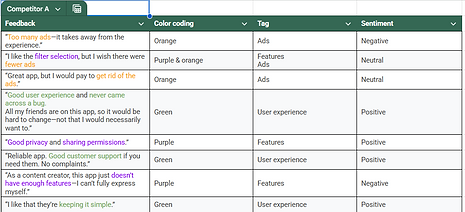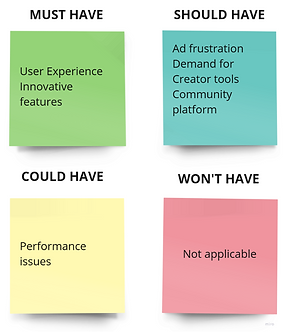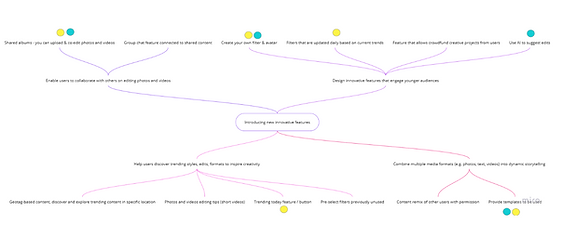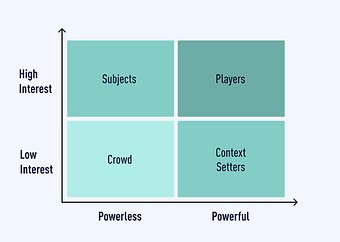Create Your First Project
Start adding your projects to your portfolio. Click on "Manage Projects" to get started
Aperture photo sharing app
Project type
CareerFoundry project
Location
Frankfurt, Germany
Role
Product Manager
Date
11.2024 - 02.2025
This project was completed as part of my Product Management program at CareerFoundry to demonstrate my ability to apply product management methodologies to solve real-world user challenges.
Credits
Tutor: Linda Walczak
Mentor: Anton Doberschuetz
Problem: Declining engagement among younger users on Aperture.
Key Insight: Younger users prefer highly interactive, community-driven experiences rather than passive photo sharing.
Solution: Develop and introduce a new feature that enhances users engagement and retention.
PROJECT OVERVIEW
Aperture is a fictional photo-sharing app that allows users to:
-
Capture and edit photos & videos in-app
-
Browse and search the photo feed
-
Add effects and filters
-
Interact with others via comments
-
Stay connected through private messaging
TOOLS
Miro / Figma / Survey monkey / Google sheets, slides, docs
PROJECT GOAL
Increase engagement among younger users by introducing new, interactive features that align with their preferences and behaviors.
DURATION
3 months
Assignment start: mid November 2024
Assignment end: mid February 2025
The assignment was accomplished on time, without any delays
APPROACH & METHODOLOGY
I followed a hypothesis-driven product management approach, structured into three main phases

SOLUTION DISCOVERY PHASE
(Research & Insights)
-
Identified user needs and engagement barriers
-
Conducted research and data analysis to validate assumptions
-
Prioritized insights to guide feature development

SOLUTION DEFINITION PHASE
(Feature Development & Testing)
-
Created a prototype and tested different feature ideas
-
Conducted usability testing and A/B testing to refine the solution
-
Defined an MVP (Minimum Viable Product) for development

LAUNCH PHASE
(Implementation & Evaluation)
-
Created a structured launch plan and aligned with stakeholders
-
Defined product success metrics using the HEART framework
-
Monitored post-launch engagement and iterated based on feedback


SOLUTION DISCOVERY PHASE: RESEARCH & INSIGHTS
Research Approach
To make informed product decisions, I developed a structured research plan based on two key assumptions selected from a Value-Damage Quadrant.
Research Plan included:
-
Research Statement: Defining the core issue
-
Research Questions: Identifying key unknowns
-
Results Criteria: Establishing success benchmarks
-
Research Methods: Selecting user interviews, surveys, and competitive analysis
Data Analysis Techniques
To synthesize research findings, I applied two structured analysis methods:
Tag & Color Coding:
-
Assigned different colors to highlight common user pain points and patterns.
-
Helped in grouping related insights for better decision-making.
Codification (Sentiment Analysis):
-
Categorized qualitative feedback based on sentiment (positive, neutral, negative).
-
Allowed for a data-driven understanding of user frustrations and needs.

Key Insights & Prioritization
Following research analysis, I created a list of key insights, prioritized using the MoSCoW matrix (Must-Have, Should-Have, Could-Have, Won’t-Have).
Key Finding: Younger users desire interactive, social-driven experiences rather than just passive content consumption. By offering positive app UX and offering new engaging features will help to retain and attract new young users.
User Persona Created: A "Content Creator Persona" was developed to guide feature ideation.





SOLUTION DEFINITION PHASE: FEATURE DEVELOPMENT & TESTING
Feature Ideation & Prioritization
To brainstorm possible solutions, we used:
-
Mind Mapping to explore feature ideas.
-
HMW (How Might We) Questions to generate innovative solutions.
-
Dot Voting & Score Cards to prioritize the best ideas based on feasibility and impact.

Prototype Development & Testing
A low-fidelity (lo-fi) prototype was created and tested:
-
Usability Testing: Identified common user pain points.
-
Action Plan Created: Proposed solutions based on feedback.


Iterative Improvements & A/B Testing
Two prototype variations were tested through A/B Testing:
-
Group A: Basic feature interaction.
-
Group B: Enhanced version with additional engagement elements.
Results: Group B showed higher engagement due to improved interactivity




LAUNCH PHASE: IMPLEMENTATION & EVALUATION
Product Metrics & HEART Framework
To measure success, I applied the HEART framework (Happiness, Engagement, Adoption, Retention, Task Success).
Key metrics tracked:
-
Engagement Rate: % of users interacting with the new feature.
-
Adoption Rate: % of new users trying the feature.
-
Retention Rate: % of returning users after feature release.
Com & Stakeholder Alignment
Effective communication was key throughout the product lifecycle.
-
Shared Workspace Maintained: A central hub for documentation, roadmaps, and updates.
-
Stakeholder Influence Matrix Used: Ensured structured and clear communication with all stakeholders.


Product Launch Plan
Steps Taken for a Successful Launch:
-
Defined launch objectives & milestones
-
Identified target audience & marketing strategy
-
Coordinated internal resources & stakeholder involvement
-
Set up post-launch monitoring & feedback loops
-
Post-Launch Analysis & Retrospective
Key learnings from launch:
-
Collected user feedback via surveys and app analytics.
-
Conducted a retrospective to analyze what worked and what could improve.
-
Iterated based on insights to optimize future engagement strategies.
key take-aways
By following a hypothesis-driven product management approach, I successfully designed, tested, and launched a new feature aimed at increasing engagement among younger users.
This project demonstrated my ability to research, ideate, prototype, test, launch, and manage a product feature—all while aligning with business goals and user needs.

User Research is Critical for Success
-
Research-driven insights ensured we built the right solution.
-
Tagging, color coding, and sentiment analysis improved decision-making.

Clear Communication Improves Team Alignment
-
A centralized shared workspace streamlined collaboration.
-
Stakeholder Influence Matrix ensured better decision-making.

Feature Prioritization Matters
-
Using MoSCoW prioritization helped focus on high-impact features.

A Structured Launch Plan Ensures a Smooth Rollout
-
A clear launch roadmap, KPIs, and monitoring strategy led to a successful feature release.

Iterative Testing is Essential
-
Lo-fi prototyping & A/B testing refined the feature before full rollout.

Post-Launch Reflection Drives Continuous Improvement
Conducting a retrospective analysis helped identify optimization opportunities.